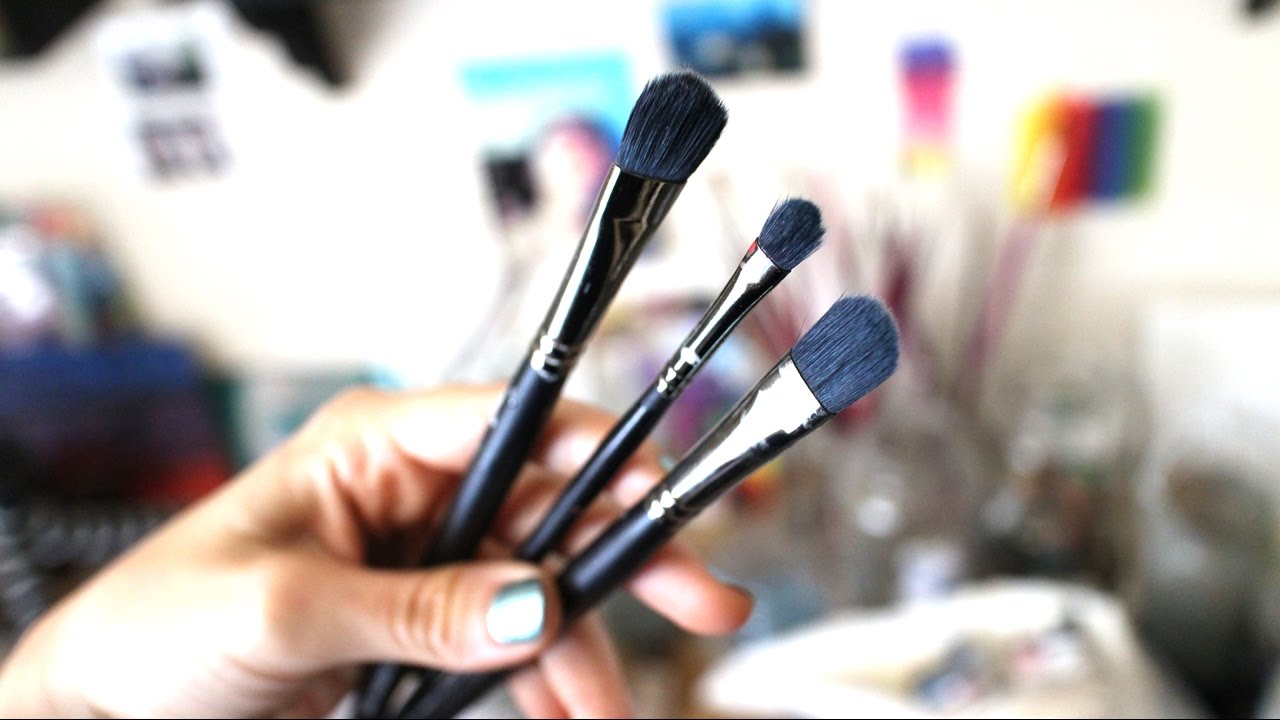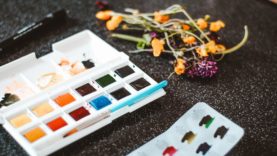
6 Acrylic Painting Rules you may Follow while Painting on Clothes
We’ve all been there, scrolling on our phones and coming across a sped-up clip of someone painting Monet’s water lilies on fabric and rocking it for the gram. Hand-painted clothing is fun and adds so much life to the traditional fashion scene, especially if you’re the one who painted them yourself.
Despite what is believed generally, you can use other types of painting besides fabric paint. Watercolors, oil paint, pastel paints, and the most common of them, acrylic paint. Before you whip up the brushes and the pots, check out these 6 acrylic painting rules you may follow while painting on clothes.
Acrylic Painting
Acrylic paint is the ultimate painting medium as it paints just about everything. Thanks to its fast-drying and acrylic-suspended pigment, it spreads on every kind of surface and stays put. Artists find acrylic paints easy to work with because of their versatility and flexibility.
Acrylic paint is often called the superstar of painting mediums because it produces a beautiful finish at any state it is applied in. Diluted with water, being spray painted or misted on by airbrushing, or even just using it straight up on its own, acrylic manages to result in an excellent polish.
With acrylic paint’s multi-utility properties, it is a coveted painting choice for beginners. They’re easy to work with, easy to find, and, no matter what, always create beautiful results. And also, when it comes to painting on fabric, acrylic does a bang-up job of retaining its opacity and staying put.
Acrylic Paint vs. Fabric Paint
You’ll be surprised to know that fabric paint is a particular blend of acrylic paint. They are just formulated with a specific mix of bonding agents that make them strong enough to hold up on the fabric. It is sometimes also called acrylic fabric paint and is just as versatile and resilient as regular acrylic paint.
Both acrylic and fabric paints do a great job of creating beautiful artwork on clothing. There are differences between the two; take a look at what they are,
- Versatility: Fabric paint can only be applied on pre-washed fabric, while acrylic paints can be applied over anything.
- Absorption: Acrylic glides over surfaces smoothly, while fabric paint absorbs quickly into the material.
- Drying: Acrylic is quick-drying on any surface, and fabric paint takes time to dry.
- Opacity: Acrylic diluted water is still opaque, and fabric paint thins.
- Durability: Acrylic may crack on fabric and come off after a few days; fabric, however, stays put and retains its color and hues.
Generally, both acrylic and fabric paints can be used on clothing. While both have their strengths and weaknesses when used on fabric, you can use them effortlessly to create artwork on your clothes.
So don’t be discouraged from creating your own hand-painted masterpieces if you don’t have fabric paint. Check out this acrylgiessen.com fabric painting guide for more!
Rules to Follow While Using Acrylic Paint on Clothes
Before you start painting your denim jacket or want to paint your matching starry sky leggings, you might want to follow some rules,
-
Choosing the Fabric
Whatever paint you’re using, the right canvas will make all the difference. While acrylic paint is versatile on any surface, using it on cotton fabric will give the best results!
This is because cotton is light, and its thread count is less than other types of fabric, which makes it easier to retain the moisture in the paint. Linen is also a good fabric surface as it also is lightweight. But watch out for wrinkles since linen is slippery, so you can heat treat it before you start painting on it.
Fabrics like leather, wool, and microfibrous fabrics would be tricky to work with. So you can heat treat those before and after painting them for better results.
-
Mixing Medium
Acrylic colors are good to paint on their own, but using a mixing medium, such as a fabric agent with it, will bring out the colors and extend their durability on fabrics.
A fabric agent will help meld in your acrylic paints properly, and you will get the best out of your acrylic paints. A medium ensures that the paint is well-absorbed into the fabric, which will reduce the chances of it cracking after some time. Otherwise, acrylic paint on its own may crack or peel off after drying.
Using a fabric medium will also secure the paint in its place and not let it bleed through the lines.
-
Mix Vigorously
Sometimes acrylic paint doesn’t perform well because it hasn’t been mixed properly. Since acrylic paint is thick, you should fold in with the other colors properly, especially other mediums.
The acrylic polymers and pigment suspended in the formula need to be loosened to bond with other mediums to deliver a seamless effect, and this is achieved by properly mixing the paint
Unless you want to use the impasto technique, which is the illusion of the paint thick and almost applied to provide a three-dimensional effect, this will show up better on a canvas rather than fabric.
-
Choosing the Brushes
The right brushes will be the game-changer for your artwork on fabric. You may think that using any paintbrushes will do the trick, but that isn’t the case. To paint on the fabric, you need to lay it flat, and if you use a brush that is fluffy or the bristles are set in a dome shape, it won’t apply the colors nicely.

So to get the most out of your acrylic paint and to ensure your colors are set right on the surface, use flat-top brushes. These brushes will lay the colors down and won’t skip as you glide across the fabric. The flat tops will also prevent colors from splattering all over (unless you want that effect).
For intricate detail work, you can use thin bristle brushes that have pointed tips. If you’re airbrushing, you won’t need brushes altogether! So long as they bring your vision to life, use any brush and technique you want. You’re the artist!
-
Let it Dry
It is crucial you give enough time for the paint to dry. If you painted a big portion and still have more to work on (detailing, finessing), let it dry first completely. Then you can continue to polish your masterpiece.
Then after you are finished, let the art dry entirely for as long as it takes. Gently dab the paint with a tissue or your fingers to check if it is dry. Don’t crinkle or fold the piece of clothing afterward. Store the item with a hanger in your closet, and keep it away from your other clothes in case the paint cracks and pigments transfer.
-
Sealing the Art
After creating your masterpiece on your t-shirt, it is time to set it, so it does not come off immediately. You can set your design using a steam iron (make sure it’s dry first), blow dryer on a low heat setting, or the best trick, a paint-setting spray to lock it all in.
Wait until the paint has set all the way, from the center to the edges; brush off any paint crummies gently with your hands or tissue, and you are ready to rock your hand-painted clothing!
Conclusion
There you go! Here are some useful and effective tips for you to follow while creating your art couture. Share this with friends and family so they can also fashion their own hand-painted garments. We hope you design some eclectic pieces and always find a way to add some color to your life!
FAQs
-
When Can I Wash My Hand-Painted Clothing?
Ans: Wait a few days up to a week to wash your hand-painted clothes. If you’re washing it by hand, which is best advised, then soak the item in cold water. Wait a minute and lift it out and let the water drip out until it is damp enough to air dry. Don’t wring or rub the item, as it will damage the artwork.
If you want to iron it, you can do so after it is air-dried halfway. For washing in the machine, don’t put any detergent or powder; set it in cold water in a gentle cycle. Wait for a few minutes and take it out. If you want to put it in a dryer, make sure to set it in a low-heat setting.
-
Will Acrylic Paint be Permanent on Clothing?
Ans: While acrylic paint is not permanent, if you dry, set, and seal it correctly, it will last you a while. It is not water or heatproof, so when you are washing or drying the fabric, make sure to apply them in low amounts. You may notice that your artwork is starting to fade; this can happen due to sun exposure. But using a proper sealant or varnish will ensure its shine and keep it intact for years to come. If the paint is cracking in places, then it means it has not been sealed decently or at all. So if you want your acrylic masterpiece to last long on fabric, seal, set, wash, and dry properly.




















